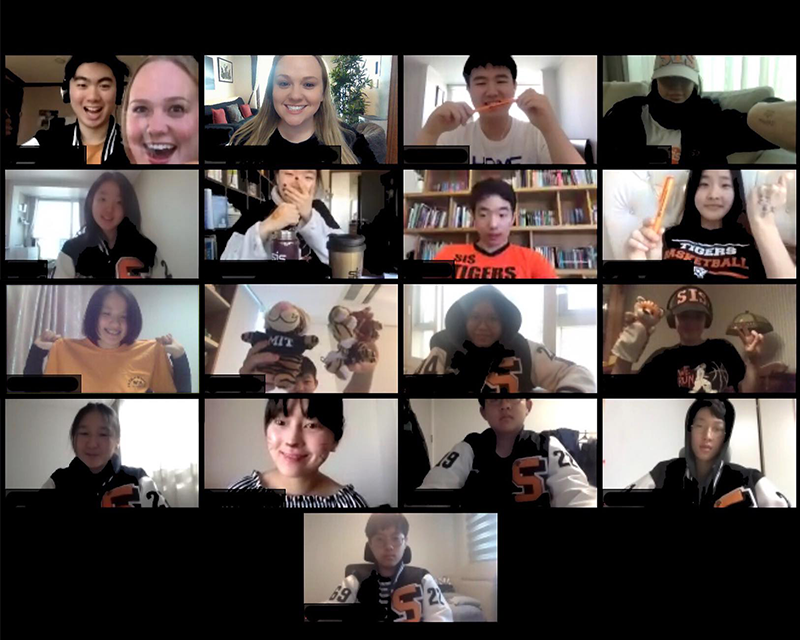SIS initially cancelled physical classes on Feb.21. Although the school initially planned the return date as Feb. 28, the physical classes were further delayed with the worsening of the coronavirus. Starting from Tuesday, Feb. 25, teachers resumed classes through virtual learning. Students and teachers alike were new to the online system and initially seemed to have trouble logging in or accessing links to video conferences. However within a few days, both teachers and students were able to cope with the new format.
“Looking down the road, we saw that there was a very strong likelihood that we would have to go online, so we went ahead and worked out how that was going to happen with our first quarantine after Lunar,” said Gray Macklin, Vice Principal of SIS. “So from that experience, we put together a plan a week before starting the online learning. The high school teachers got a full day of training sessions with Mr. Montague on how to organize this type of learning plan. The more I see how other schools, especially in America, are dealing with this problem, the more I feel pretty good about our level of preparation we had in advance.”
Students have engaged in virtual learning through Google Hangouts or Zoom video calls to interact with teachers. Many teachers had to adapt lesson plans to accommodate the new platform while students had to adjust to learning exclusively with digital tools. Students were to log into their accounts at regular school times to learn lessons and were expected to do classwork accordingly. Many summatives and more traditional tests were replaced with handwritten assessments. This meant that students were to point their computers toward their work and would have to show both hands while writing. In order for the teacher to see all screens, some teachers decided to use another video calling app such as Zoom. Zoom is popular in the teacher community due to its ability to see every student, project iPad screens or whiteboards to teach lessons, and give feedback privately to students. The only drawback is that the application is paid and not as simple as Google Hangouts. For other classes that are harder to assess students with summatives, teachers have resorted to creative projects or have delayed their tests until school resumes.
“The major benefit to this new system is that it has given me time to think about how to engage students and measure understanding using digital tools,” said Kendall Sadler, English teacher. “These digital tools provide students with a voice on a medium that they may feel more comfortable using.”
The many teachers that have left Korea due to the coronavirus have seemed particularly troubled in adapting to the new online system. Depending on which part of America teachers have traveled to, their working hours have become from evening to dawn, consequently impacting their sleep schedules. Although there is a misconception that the teachers are on “vacation,” since they plan lessons and grade tests during the day and teach classes at night, teacher working hours have been unintentionally extended. Some teachers have reported eye soreness due to extensive screen time due to these extended hours.
As teachers cannot monitor all students simultaneously, the online classes have also allowed students to lose focus in class by using their computers for purposes such as email, social media, games, or studying for other classes Many students have also missed classes due to forgetting to wake up from napping in between classes which would not have been a problem at school.
“I remember that I accidentally slept in and missed my first class,” said Kyuhee Han (12). “With classes being online, it is harder to manage my time since all the work is done at home where I feel comfortable and not similar to the working environment at school.”
The return date of physical classes for students and teachers is tentatively set to around March 30. Until then, online classes seem to be stable, with most students and teachers having adapted to the system now.

